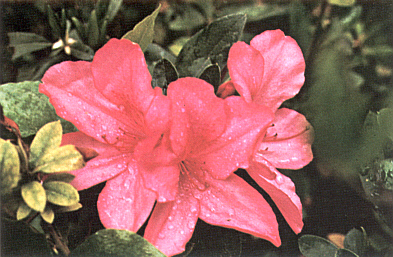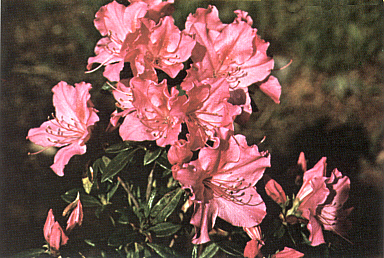QBARS - v29n3 Hirado Azaleas and Bungo Azaleas
Hirado Azaleas and Bungo Azaleas
Hideo Suzuki, Saitama-ken, Japan

|

|
|
|---|---|---|
Hirado Azalea Photo by Hideo Suzuki |
Bungo Kurenai Azalea Photo by Hideo Suzuki |
The Hirado Azaleas of Japan were originally from tiny Hirado Island which lies on the northeastern side of Kyushu, one of Japan's main islands. Although Japan was officially closed to foreign nations until one hundred years ago, this island has been open for the past four hundred years. Ships from such foreign countries as Holland, Portugal and China anchored in the port to trade. Under these circumstances, foreign azaleas, probably R. simsii , molle , scabrum , mucronatum and others, seemed to have been brought in and planted here. For hundreds of years cross pollination occurred naturally among them and a large group of azaleas emerged.
In 1951 an investigation was conducted on the island under the sponsorship of the Kyushu Agricultural Experiment Station and as a result three hundred forms were recognized. In Hirado, new attempts are being made to cross within the group, and with others, to produce better quality azaleas. This is the Hirado Azalea.
Also in 1957 in Ohita Prefecture in Kyushu, an improvement project of the Hirado Azalea was started under the guidance of Mr. Bungo. Miyazawa, first Director of the Ohita Prefectural Hot Spring Heat Utilization Agricultural Research Institute. The main purpose was aimed at producing cold tolerant and non-sun fading hybrids, which would be without these drawbacks of the Hirado Azaleas. Another objective was working toward creating new colors of flowers not found in the old Hirado Azaleas.
Five of the one hundred so far produced were named recently as 'Bungo Kurenai','Funai Musume', 'Bungo Murasaki', 'Bungo no Homare', and 'Bungo no Sakae' and more will be named sooner or later.
This group has lately been called the 'Bungo Azaleas'. The name 'Bungo' came from the first name of Mr. Bungo Miyazawa, the original breeder and also from the old name of Ohita Prefecture which was also 'Bungo'. When the plants are mature, the "Bungo Azaleas' are said to stand -7° C. (19.4° F.) at their present stage of development. The typical form of this group is 'Bungo Kurenai', which will play an important role in future hybridizing.

